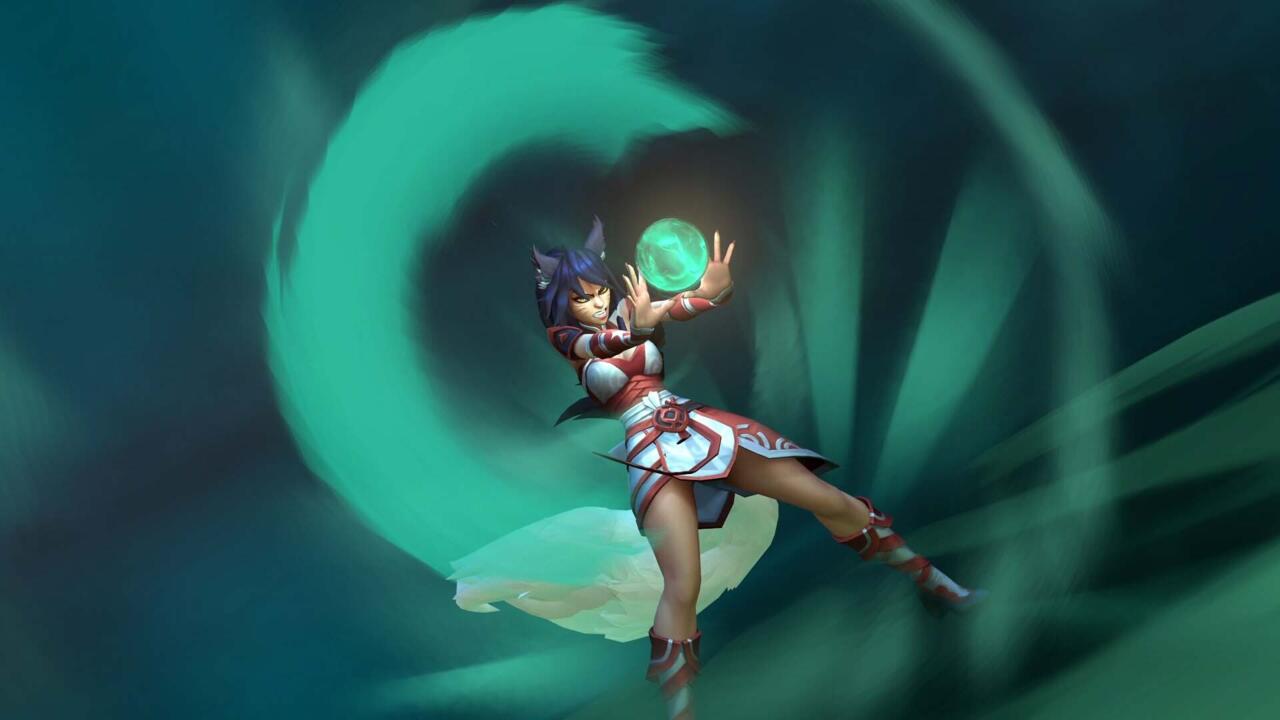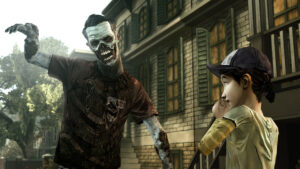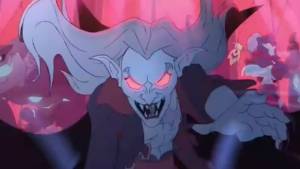With Ruined King: A League of Legends Story, developer Airship Syndicate finds itself in an unenviable position. The studio behind 2018’s Battle Chasers: Nightwar has been tasked with taking its critically-acclaimed approach to the JRPG format from that game and adapting it for League of Legends (LoL), one of the most popular video game brands in the world. Battle Chasers proves the developer can make a solid JRPG out of a short-run comic book, but League is in a different, uh, league thanks to featuring more than 150 champions and having a decade’s worth of lore and worldbuilding to reference. Conjuring a story worthy of the name sounds like a monumental task, but not only did Airship Syndicate do LoL justice with Ruined King, the JRPG mechanics bring the LoL experience to a whole new genre in an engaging and unique way.
Ruined King: A League Of Legends Story takes us to the pirate city of Bilgewater, a sprawling behemoth of wood and salt occupied by swashbucklers and sea dogs. Sarah Fortune–Miss Fortune to the LoL savvy–has recently taken over from the villainous Gangplank when the town is besieged by a black mist containing horrible monsters. Her story is then intertwined with five other champions–Illaoi, Braum, Yasuo, Pyke, and Ahri–as they journey to find the source of the Black Mist and contain it once and for all.
The first thing to appreciate about Ruined King is the bustling metropolis that is Bilgewater. Wooden paths curve and twist around each other as you journey through it, with branching paths leading to all sorts of discoveries. There are harbors, posh estates, rough and tumble watering holes, and more to find throughout this city of the sea. As you progress through the game, you’ll find other locales that are also neat–a few late-game dungeon designs still stick out in my head–but nothing compares to the majesty of Bilgewater, which is a good thing, considering you’ll spend nearly half the game there.
Due to its size, it’s easy to get lost in Bilgewater. Unfortunately, using the map to find your route isn’t as helpful as it should be. The map does show each subdivision of the area you’re in, but the lack of traditional fast travel to places already visited is a weird choice. There is a Gondola system that lets you quickly get across the city, but you can only access the gondola from certain points on the map and you can only be delivered to the same set of points. The gondolas are appreciated, but the ability to be able to select a point and immediately travel to it–even if it was expanded to the Rest Points that dot the land–would have been great.
A lack of fast traveling does mean you spend more time with the champions you’re controlling, and the story Airship Syndicate has written for them is marvelous. The lore of League before now was mostly written in small online bios, but Ruined King adds enough to this world to humanize these characters, helping to make players appreciate this motley crew of six even more. The Kraken Priestess Illaoi routinely second-guesses herself even when the answer is right in front of her. Ahri the Vastaya worries that her internal hunger will get those around her killed. Yasho is a brooding samurai who learns the value of friendship, while Pyke is a ruthless killer brought into the group by fate itself. The best of the bunch, however, is Braum, a muscular yet gentle soul who’s constantly sharing stories of his homeland with the group when he’s not bashing enemies’ heads in with his massive shield. His dialogue with the other characters will elicit genuine smiles and laughs, adding levity to the story that is appreciated.
Ruined King will see you send these champions into battle against a murderer’s row of enemies and monsters, and the battle system is where Ruined King really blossoms. Your characters can attack in one of three ways: instants, “lane” attacks, and Ultimate. Instants are immediate abilities that deal damage, build the Ultimate meter, and offer other perks. Ultimates are the team’s most powerful attacks, usually a killing blow or a saving grace.
Lane attacks, however, are the marquee attraction: As League of Legends incorporates a lane system into its battlefield, Ruined King also uses “lanes” as a battle mechanic, though admittedly they compare to LoL’s lanes in name only. Here the Lanes make up the “active time battle” system, represented by three bars on the bottom third of the screen, with every ally and enemy’s picture appearing on it somewhere. Each of the three “lanes” has its own designation: the top lane is Speed, the middle is Balance, and the bottom is Power. Lane attacks are assigned one of these three lanes when chosen, and the lane selected affects certain elements of the ability. Attacking in the Speed lane, for instance, makes the hero’s turn come faster, but at the expense of damage dealt, HP healed, and so on. The Power lane, as you can guess, is the opposite, delaying the hero’s turn but buffing the attack. The Balance lane is the default, offering a middle ground between the other two.
Enemies have access to these lanes too, and while most of them use them the same way your heroes do, some have the ability to turn sections of a certain lane into a hazard area. Hazards range from dealing damage and inflicting status effects to heals and stat buffs, and all characters who end up inside the zone when it triggers are affected. You could find yourself down to your last champion, attempting a Power Lane attack that could turn the tide, only to accidentally fall into a hazard zone and be killed before the attack goes off. Where enemies and hazards are located plays a big part in battle planning, and engages you in a way few other JRPGs manage.
Not only did Airship Syndicate do League of Legends justice with Ruined King, the JRPG mechanics bring the LoL experience to a whole new genre in an engaging and unique way
The risk/reward element of this system–deciding whether you strike fast but for less damage or go for the home run–is the best part of Ruined King, without question. Where other JRPGs can sometimes devolve into mashing the same attacks repeatedly, the lane system adds some strategy to every single battle. You’ll have to establish a plan of attack before engaging, considering not only your lane placement but the placement of your enemies, and strike in a way that will benefit your team every time. Some attacks even allow you to push enemies and allies either forward or backward in a lane, one champion coming to the aid of another in a dire moment. If it sounds like I’m describing playing the core League of Legends, that’s the point; the manner in which Airship Syndicate took that experience and modified it into a whole new genre is extraordinary.
That said, it’d be nice if some of the battles, particularly in the late game, were a bit more difficult than they turned out to be. Late-game enemies and bosses offered far less of a challenge than expected, making the last few chapters breeze by. My team of champions became too powerful, turning away the majority of enemies–including some bosses–in those final stages with little effort. This did sometimes breed overconfidence, a sure victory slowly morphing into a dire fight to survive, but there weren’t as many of those situations as anticipated.
One of the main sources of those tough fights are the Multiwave Battles. Sometimes you’ll encounter enemies grouped together on the map with a chain symbol displayed over their heads; if you initiate battle with any one enemy in the group, a Multiwave battle will begin. The number of waves in this format depends on how many enemies were in the group when battle began, and each wave consists of multiple opponents. Where you might not have had trouble with one of these waves in isolation, when they come one after another the damage builds up quickly and you can quickly find yourself in a bind. Multiwaves offer a more challenging way to engage enemies, and while single encounters are underwhelming in difficulty, these Multiwaves more than make up for it.
As you win more battles and gain experience, you’ll need to think about each champion’s skill set and what you want to use it for. Building each champion into a formidable fighter requires some deep thought, and is another part of Ruined King that excels. Equipment can be purchased or found in dungeons and changed on the fly, giving the characters who wear it an instant boost in stats. Leveling up your characters awards Ability Points for each one’s unique moveset, as well as Runes that can be assigned for stat boosts. Both of these alter the champions’ capabilities in more ways than one, hearkening back to a Champion’s build in the source game.
Take Illaoi, the Kraken Priestess mentioned earlier. She can spawn ethereal tentacles around her, up to six at a time. Whenever she performs an action, the tentacles will attack at random, independent of her. She can also “spend” the tentacles as resources for extra buffs to healing moves or damage for attacks. Her Passive ability, Prophet of an Elder God, has an upgrade where each time a tentacle attacks, the most wounded champion in your party has some HP healed. Couple that with an upgrade for her Harsh Lesson Lane ability, which also causes each tentacle to heal the weakest ally when it attacks, and you’re then healing that champion twice for every tentacle Illaoi has spawned when her turn arrives–up to six at a time, remember–before you even act. This is but one of the many different situations you can scheme for in this system, giving you a level of control over your party that always has your mind cooking up new ideas.
But when you’re done building your ideal champions, make sure you save, or you might have to build them again. The autosave system can be brutal at times, sending you to the beginning of a lengthy dungeon after you’ve completed a good section of it. Saving often may return you to the same physical location as an autosave upon an errant death, but at least manual saves retain the chests you’ve opened or puzzles you’ve solved along the way. Enemies will still respawn though, so even though you can save yourself some pain by saving, you always have to be prepared to grind through the same enemies you’d just dispatched. A more active autosave system would have saved a lot of frustration, but getting into a groove of routinely saving mitigates that issue nicely.

Gallery
Of course, there are times when even a perfect save system wouldn’t help, thanks to Ruined King’s intermittent bugs. On three separate occasions during my playthrough, the game crashed; I went from finishing a battle to the PS5 main menu in a matter of seconds. Another time, an enemy attacked me as I activated a teleporter, so after the battle, I was invisible and couldn’t interact with anything. None of these glitches are completely game-breaking, thankfully, as a simple reload of a checkpoint or save reverses the issue, but they’re still annoying in action.
Ruined King: A League Of Legends Story has set the bar for future forays into League of Legends lore. The story Airship Syndicate tells here delivers in a big way, turning these six champions into the new faces of the franchise. The JRPG Airship crafted around its story is also wonderful, creating a feeling of playing League of Legends while actually playing a turn-based RPG battle. A few technical issues pop up here and there, but outside of the rare crash, none of them break the experience for every game. If this is the level of detail that future Riot Forge projects reach, we will all hail the Ruined King for ushering in this new era.
- 7
- abilities
- access
- across
- Action
- active
- adapting
- All
- AREA
- around
- bars
- Battle
- Battlefield
- BEST
- Bit
- Black
- brands
- bugs
- build
- Building
- Bunch
- challenge
- challenging
- City
- coming
- cooking
- Couple
- Crash
- Creating
- Crew
- curve
- damage
- deal
- dealing
- detail
- Developer
- DID
- different
- Dogs
- down
- During
- engage
- equipment
- experience
- faces
- FAST
- fights
- finds
- First
- format
- Forward
- Franchise
- Friendship
- future
- game
- Giving
- Glitches
- good
- great
- Group
- having
- here
- Home
- How
- HP
- HTTPS
- i
- image
- Independent
- isolation
- issues
- IT
- journey
- Justice
- King
- Kraken
- large
- leading
- league of legends
- Level
- location
- Majority
- Making
- map
- May
- Mechanics
- more
- Most Popular
- offer
- offering
- online
- Other
- Pain
- physical
- picture
- planning
- players
- Playing
- Popular
- power
- powerful
- projects
- proves
- ps5
- range
- RE
- requires
- Resources
- REST
- review
- Route
- s
- Said
- saving
- Screen
- SEA
- selected
- set
- Simple
- SIX
- Size
- small
- So
- Soul
- sources
- speed
- spend
- stats
- Status
- Stories
- Story
- Strategy
- studio
- survive
- system
- Technical
- tells
- The
- The Source
- the world
- Through
- Tide
- time
- together
- top
- traditional
- travel
- triggers
- twist
- unique
- us
- value
- Video
- watering
- Wave
- waves
- What
- WHO
- win
- world
- worth











